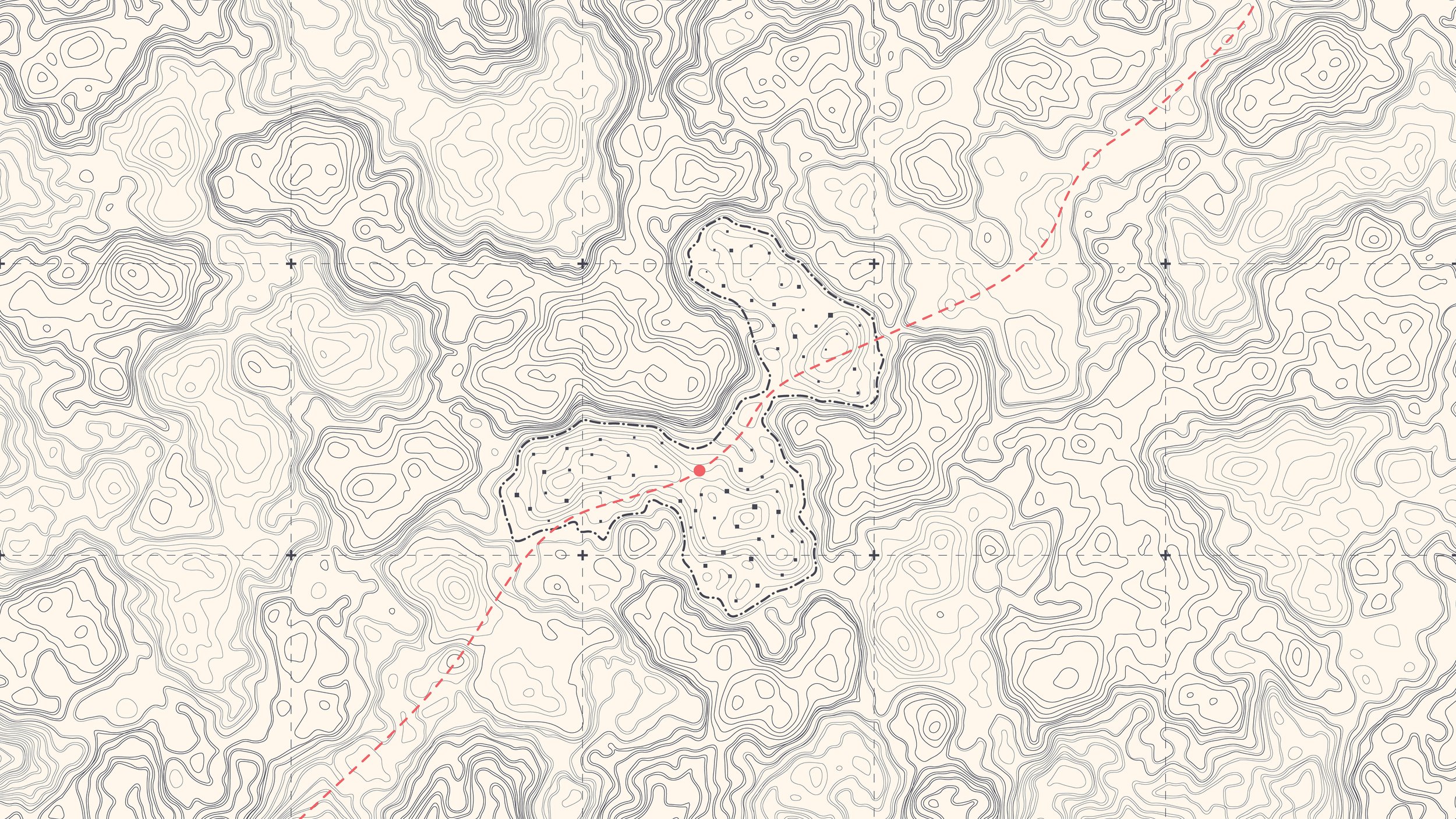the feed
Jackery Explorer 1000 Portable Power Station Complete Review
The Jackery 1000W Portable Generator is the most powerful and biggest model in Jackery's portable power station portfolio. In-depth Review
Jackery 1000W Portable Generator is a beast. I wouldn't consider any camping, overlanding, or van-lifing setup complete without a source of power - especially if you're like me and you have to keep all of your gidgets and gadgets and tools of the trade juiced up. I have tried out a few different brands, but this thing takes the cake for a few reasons. Is it perfect? Nah. Is it damn close? You betcha!
How does the Jackery Explorer 1000 perform in real-world situations? Is it capable of powering the essentials of life on the road, or is it more suited to weekend camping? How does it compare in terms of cost and capacity to DIY electrical systems?
I put the Jackery Explorer 1000 and SolarSaga 100W foldable solar panels through a battery of tests that were meant to simulate a range of conditions you could face on the road. Continue reading for an in-depth look at the Jackery 1000W Portable Generator, as well as my honest thoughts on it.

What tf is a Portable Solar Generator?
A battery, charging system, inverter, and AC/DC outputs are all included in a portable "solar generator." These power stations do not generate energy on their own; however, they may be charged using solar panels (or by connecting into an AC wall socket or DC power source), and they can be used to power both AC and DC equipment while traveling.
They allow you to rapidly and easily have a mobile off-grid power supply — simply buy one, toss it in your vehicle, and go.
Portable power stations are available in a variety of sizes and outputs, ranging from little battery packs that can only charge your phone and maybe operate some lights to much bigger ones that will meet all of your power demands.
The Jackery 1000W Portable Generator is aimed towards this market.

About the Jackery 1000W Portable Generator
The Explorer 1000 is the most powerful and biggest model in Jackery's portable power station portfolio.
It's advertised as an all-in-one power solution that can keep you off the grid indefinitely to the vanlife, camping, and overlanding groups. But is it possible?
Let's jump into the nitty gritty deets.
Battery Capacity
When compared to other portable power stations at this price point, the Jackery 1000 has a very big battery:
- 1002Wh Lithium-ion NMC battery (21.6V, 46.4ah capacity. Rough equivalent of an 83ah 12V Lithium battery, or a 165ah 12V lead acid or AGM battery)
- Rated for 500 cycles to 80% capacity
But, in order to compare 1002 Watt-hours to your other battery alternatives, how much is 1002 Watt-hours in amp-hours (ah)?
The Jackery's battery, for example, is 21.6V, rather than the typical 12V found in most deep cycle batteries. The Jackery battery is officially 46.4 ah (ah = watts / voltage), however it functions similarly to an 83ah 12V lithium battery or a 165ah 12V lead-acid or AGM battery (since you can only discharge these down to 50%).
Because you can't daisy-chain the Explorer 1000 with another Jackery or an external battery, you get what you get with the Explorer 1000's built-in capacity.
The Jackery 1000's battery is rated for 500 discharge cycles at 80% capacity. That means the battery will have 80 percent of its original capacity after 500 cycles of draining from 100% to 0%. The Jackery will continue to work after 500 cycles, although batteries are typically decommissioned after 80% capacity.

Charging and Charge Times
You can charge up the Jackery via solar, or with the included AC and DC adapters.
Here are the specs:
- MPPT solar charge controller with Anderson Powerpole inputs (solar panels not included)
- 30V / 163W maximum input
- 8 hours charge time
- AC adapter (through an 8mm input)
- 24V maximum input
- 7 hours charge time
- DC adapter (through an 8mm input)
- 12V maximum input
- 14 hours charge time
The Jackery 1000W Portable Generator has an MPPT solar charge controller for solar charging. You'll need to buy Jackery's SolarSaga foldable solar panels separately, but you can plug them into the Anderson Powerpole connectors on the front of the device and you'll be ready to go (or just get an adapter and use whatever panels you want).
How long does it take for the Jackery to charge up using solar power? With two 100W panels, the Explorer 1000 takes around 8 hours to fully charge from the sun (from 0%).
The Jackery can only receive solar power of up to 30 volts or 163 watts. Solar panels produce around 18V each, therefore you can't connect them in sequence to the Jackery since it would produce 36V. You can't operate more than two 100W panels in tandem since the total output would be over 163W during peak daylight hours.
The supplied AC adapter takes around 7 hours to charge from a wall outlet.
It takes around 14 hours to charge using your vehicle's 12V cigarette lighter socket.

Output Ports (What can You Plug into the Jackery 1000W Portable Generator?)
The Jackery Explorer 1000 includes a nice variety of AC/DC output ports:
- 3 x AC outlets tied to a 1000W pure sine inverter (2000W surge)
- 2 x USB-C (up to 3A output)
- 2 x USB-A (one 5V/2.4A, one Quickcharge 3.0)
- 1 x 12V cigarette lighter plug (up to 10A; 13.2V regulated output)
The Jackery's inverter is a pure sine wave inverter with a constant output of 1000W and a surge output of 2000W. This is more than adequate to power most AC appliances in a camper.
The 12V DC cigarette lighter plug has a controlled 13.2V output and can supply up to 10A. This means it maintains a constant voltage, which is crucial for powering equipment with a low voltage cutoff, such as 12V refrigerators. For contemporary gadgets, the USB ports are enough.
Display
The input wattage, output watts, and charge percentage are all displayed on the Explorer 1000's informative LED display. This allows you to quickly and easily obtain all of the information you need at a quick glance.

Shape & Form
For what it is, the Jackery 1000W Portable Generator has an appealing form aspect and is tiny and lightweight.
- LED flashlight on the side of a rugged molded ABS structure
- Handle for convenient transport
- At barely 22 pounds, it's extremely light.
The Explorer 1000 has a beautiful appearance and a robust, high-quality feel about it. It also features a handy carrying handle and weighs only 22 pounds, which is many pounds less than competitors, making it extremely portable. With one hand, you can simply transport this to and from campgrounds.
On the side of the Jackery is an LED flashlight which comes in handy in a pinch, but it doesn't put off too much light.
Warranty
All Jackery power stations come with a 2-year limited warranty.
In The Box
The Jackery comes with everything you need for on-the-go power (except for solar panels):
- Jackery Explorer 1000
- AC adapter
- DC adapter
- Parallel adapter cable for SolarSaga panels (panels not included)
- Carrying pouch for all the cables

About the SolarSaga 100W Foldable Solar Panels
The monocrystalline SolarSaga panels are made of sturdy nylon and plastic/rubber. For mobility, they fold in half and include molded carrying handles. The cord is contained in a zipped pouch on the rear, which is a great touch and contributes to the simplicity of carrying these panels around. They also have USB-A and USB-C connections integrated right into the back of the panel for extra device charging options.
Each panel has two kickstands attached to the rear (and held in place with velcro). Simply unfold the panels and flip out the kickstands to put them up. Furthermore, each panel weighs just 9.1 lbs, making them easy to transport to anywhere you need them.
These are hard to beat when it comes to portable solar panels. However, they are costly, as are all portable panels, at approximately $300 apiece — much more than purchasing a solid aluminum solar panel and constructing your own folding mount. The SolarSaga panels, on the other hand, are handy, lightweight, and well-designed, so the extra cost may be worth it to you.
Another difficulty is the issue of lifespan (and this goes for portable panels in general). We don't know how long the SolarSaga panels will survive, but they won't live as long as solid aluminum panels, which may last up to 20 years (flexible solar panels generally last about 5 years, for example). If you're the sort that changes all of your gadgets every few years, this may not be an issue for you, but it's something to consider.
The cost and durability of the SolarSaga panels are comparable to those of other portable panels. They work great and are among the most effective folding panels available.

The Pros and Cons of the Jackery 1000W Portable Generator
The Jackery Explorer 1000 is a well-made and handy portable power station that comes with a number of advantages as well as some drawbacks. These restrictions may be insignificant to you, or they may be a deal breaker. It all relies on your circumstances and requirements.
Pros
- Build quality is excellent. The Jackery (as well as the SolarSaga panels) appear to be well-made.
- It is quite transportable. The Jackery 1000 is compact and easy to transport. This also means that you may park your van in the shade and leave the portable solar panels in the sun on hot days. It also has a built-in LED illumination that makes moving it in the dark much easier.
- It's simple to use. Everything about it is simple to use, it has all of the necessary ports, and it just works. Simply connect it to some solar panels or the supplied AC/DC adapters to charge it.
- Versatile. This little device can supply your van's basic electrical demands and can also be utilized for things outside of your van.
Cons
- There is a limit of 200W of solar power that may be plugged in. The Jackery can only receive 30V or 163W of solar power, which is a significant restriction. Adding extra panels is the simplest method to improve bad solar conditions, but this is not possible with the Jackery.
- It is not possible to charge from both AC/DC and solar at the same time. When you're running short on power, being able to charge the device from the AC/DC port while driving and simultaneously charge from roof-mounted solar panels hooked into the Anderson port would be quite helpful
- It is not possible to daisy-chain another Jackery or an external battery. This is a feature that several rival power stations offer, and it would greatly assist the Jackery in making sense in a larger range of scenarios. You may never require more than the Jackery's 1002Wh battery capacity, but if you do, you're out of luck. This restricts the Jackery's potential as a real full-time vanlife option.
- A Jackery or an external battery cannot be daisy-chained. This is a feature that several rival power stations offer, and it would really help the Jackery make sense in more scenarios. You may never require more than the Jackery's 1002Wh battery capacity, but if you do, you're out of luck. The Jackery's potential as a full-time vanlife option is hampered as a result of this.
SHARE ON YOUR FAVORITE PINTEREST BOARD!





OUTDOOR
ADVENTURE
Featured Posts
HIKING
|
FLY FISHING
|
CAMPING
|
BACKPACKING
|
GEAR REVIEWS
|
HIKING | FLY FISHING | CAMPING | BACKPACKING | GEAR REVIEWS |

Best of
Top Clothing Brands of 2023
Discover unbeatable deals on Patagonia winter essentials at the REI Outlet sale! Get up to 40% off on jackets, parkas, and more.

Subscribe to Our Newsletter
Sign up with your email address to receive news and updates.
Get in touch.
Just like in a hardcore round of intense pickleball, communication is key! Reach out with any questions, comments, beer recommendations, inquiries, critiques and jokes.





A well-equipped car camping kitchen setup makes outdoor cooking effortless. Here’s my essential gear list—powered coolers, Jetboil stoves, storage solutions, and more—to help you cook like a pro on the road.